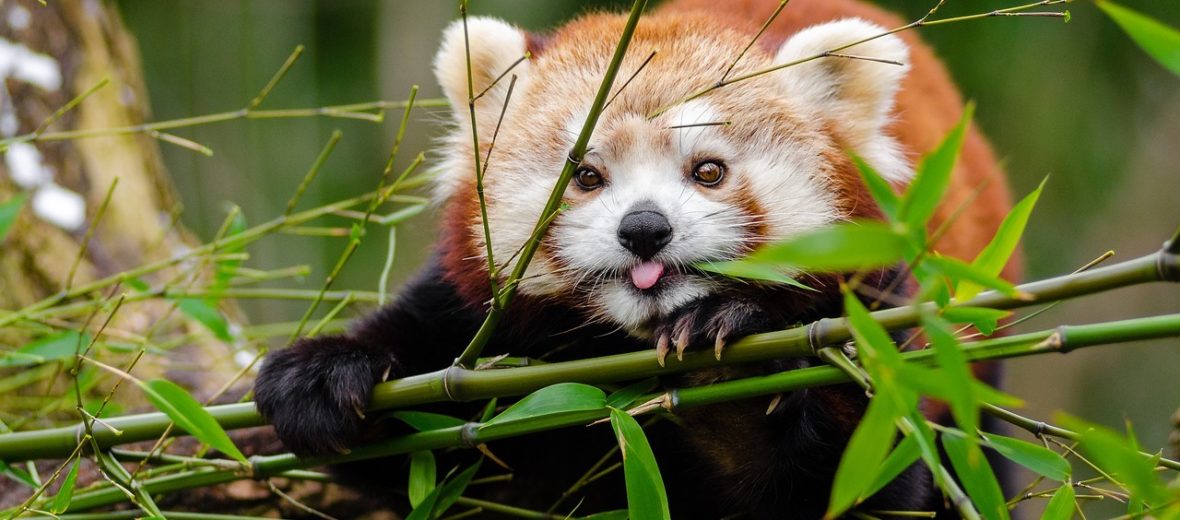
Not as big as a regular panda, but certainly as adorable, it’s the red panda. The forests red pandas live in need to have a steady supply of bamboo in order for them to thrive. Red pandas live in the mountains of Nepal, central China and northern Myanmar in rainy, high-altitude temperate forests and tropical forests. Other names for these adorable critters are: cat-bear, bhalu biralo, lesser panda, ye niglva ponva, wah donka, Himalayan raccoon, bear-cat, fox bear, and even Firefox. Red pandas are listed as Endangered by the IUCN.
First the Stats…
Scientific name: Ailurus fulgens
Weight: Up to 14 lbs.
Length: Up to 1.9 feet, plus an 18 inch tail
Lifespan: Up to 14 years
Now on to the Facts!
1.) Red pandas are not closely related to pandas at all. They are actually more closely related to bears, seals, walruses, sea lions, raccoons, skunks, weasels, otters, and even badgers.
2.) The name “panda” is actually said to come from the Nepali word “ponya,” which means plant eating animal.
3.) They eat bamboo leaves, plus bamboo shoots whenever they are in season (almost exclusively), flower, fruit, and even eggs & birds (this happens very rarely). This makes them a herbivorous carnivoran.
4.) These little beasts are very territorial and live solitary lives, except during mating season.
5.) These little cat-bears have an extended wrist bone that is also called a false thumb. They use this digit to help them climb trees.
But wait, there’s more on the red panda!
6.) Artificial sweeteners are a favorite of red pandas.They have been documented enjoying sucralose, neotame, and aspartame. This makes them the only non-primate species known in existence to have the ability to taste aspartame. It was initially thought that only old world apes, monkeys, and humans could taste this chemical.
7.) The red panda is crepuscular (active at dawn and dusk).
Did you know…?
The mascot for the Firefox Web browser is actually a red panda. This is according to Mozilla.
8.) Snow leopards, clouded leopards, hawks, owls, wild dogs, and humans are their primary predators.
9.) Females give birth to 1 – 4 young, called cubs. Males do not participate in raising the kids.
10.) Red pandas are usually born as twins.
But wait, there’s still more on the red panda!
11.) They can eat up to 20,000 bamboo leaves in a single day!
12.) Those bushy tails are used for balance and to curl up with, to keep warm in winter.
13.) If threatened, they will rear up to appear larger and show their claws. If that doesn’t work then they will release a powerful skunk-like musk from their scent glands, located near the anus.
Now a Short Red Panda Video!
Also, check out the Critter Science YouTube channel. Videos added frequently!
Want to suggest a critter for me to write about? Let me know here.



